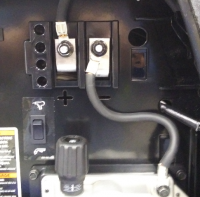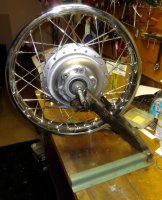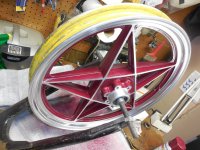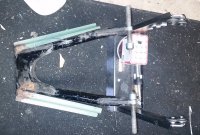Besides side to side and out of round...being centered on hub part of it too...lots bikes different length spokes side to side (rear wheel mostly) so can get wheel "true" but it not centered correct...affects handling quite a bit...that is where "dishing" tool from bicycles comes in handy...correct dish with both wheels needed so they not not ride offset parallel line
Last edited:









